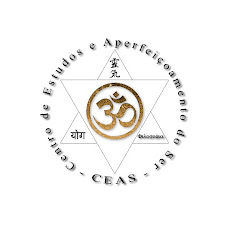Wednesday, June 16, 2010
PRANAYAMA
What is Pranayama - Many people think of Pranayama as just breathing control, but it is very much more.
Ayama means dimension, not control.
So pranayama is practiced in order to expand the dimensions of prana within the body.
Pranayama is essentially a process by which prana is controlled by regulating the breathing voluntary. It involves a temporary pause or interval in the movement of the breath.
Purpose of Pranayama - The Hatha Yoga Pradipika states that Pranayama is practiced in order to understand and control the pranic process in the body. Breathing is a direct means of absorbing prana and the manner in which we breath sets off pranic vibrations, which influence our entire being.
By becoming aware of the nature of the breath and by restraining it, the whole system becomes controlled. When you retain the breath you are stopping nervous impulses in different parts of the body and harmonising the brain wave patterns. In pranayama, it is the duration of the breath retention, which has to be increased. The longer the breath is held, the greater the gap between nervous impulses and their responses in the brain. When retention is held for a prolonged period, mental agitation is curtailed.
Through pranayama the mind can be brought under control. In many spiritual traditions, including Sufism, Buddhism and Yoga, it is known that by concentrating on the breath, you can still the mind, develop one-pointedness and gain entry into the deeper realms of the mind and consciousness.
Precautions and Prohibitions - Pranayama should not be practiced when the lungs are congested.
- Pranayama should not be practiced immediately after meals and at least four hours should be allowed after eating.
- During Pranayama the breath must not be forced or strained.
- People with high blood pressure, lung, heart, eye or ear problems should NOT hold after an IN breath and no vigorous breathing exercises, cleansing or bellows breaths.
- People with low blood pressure should NOT hold after an OUT breath.
Ayama means dimension, not control.
So pranayama is practiced in order to expand the dimensions of prana within the body.
Pranayama is essentially a process by which prana is controlled by regulating the breathing voluntary. It involves a temporary pause or interval in the movement of the breath.
Purpose of Pranayama - The Hatha Yoga Pradipika states that Pranayama is practiced in order to understand and control the pranic process in the body. Breathing is a direct means of absorbing prana and the manner in which we breath sets off pranic vibrations, which influence our entire being.
By becoming aware of the nature of the breath and by restraining it, the whole system becomes controlled. When you retain the breath you are stopping nervous impulses in different parts of the body and harmonising the brain wave patterns. In pranayama, it is the duration of the breath retention, which has to be increased. The longer the breath is held, the greater the gap between nervous impulses and their responses in the brain. When retention is held for a prolonged period, mental agitation is curtailed.
Through pranayama the mind can be brought under control. In many spiritual traditions, including Sufism, Buddhism and Yoga, it is known that by concentrating on the breath, you can still the mind, develop one-pointedness and gain entry into the deeper realms of the mind and consciousness.
Precautions and Prohibitions - Pranayama should not be practiced when the lungs are congested.
- Pranayama should not be practiced immediately after meals and at least four hours should be allowed after eating.
- During Pranayama the breath must not be forced or strained.
- People with high blood pressure, lung, heart, eye or ear problems should NOT hold after an IN breath and no vigorous breathing exercises, cleansing or bellows breaths.
- People with low blood pressure should NOT hold after an OUT breath.
Subscribe to:
Comments (Atom)

